Hiking Essentials for Multi-Day Adventures
When you are headed out on any serious hike there is a list of must-have items you should be taking with you.
Hiking Essentials for Multi-Day Hikes
Hiking essentials for beginners are no different to those of an experienced hiker. Hiking gear may vary depending on the weather and length of the trip, but the core requirements are the same. The full list provided here will ensure you are prepared to deal with situations in maximum comfort and with minimal stress.
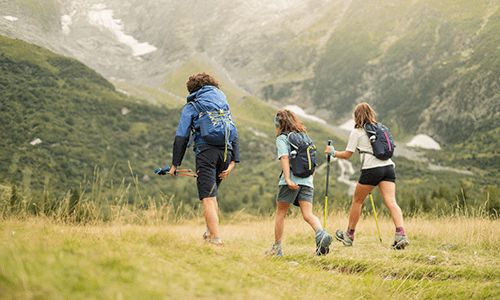
Hiking Essentials
Backpack: 50-70 liters should get you through most 3-day trips. Good ventilation and waterproofing are a big plus, though rain covers can be purchased.
Navigation: A physical map, a compass and a flashlight with spare batteries. Google Maps is great, but GPS and battery are finite luxuries in the countryside.
Clothing: Hiking boots or walking shoes, waterproof trousers and a waterproof coat. Any fool can be uncomfortable. You are not a fool. Emergency shelter: Lightweight tube tent and a sleeping bag for day trips, a standard tent and a camping mat for overnight stops. Food and water: Always pack more food and water than you’ll need. Nuts, dried fruit and beef jerky are great nutrient dense, lightweight travel options.
First aid kit: Think blister packs, plasters and disinfectant. Insect repellent could be useful too depending on location and season.
Sun Protection: Even in the cold of winter, sunglasses and sunscreen are a must at altitude.
Toiletries: Toilet paper in a waterproof bag. When you’ve got to go, you’ve got to go. While some of these items may seem nerve racking, the necessity of these items is for extreme situations which are exceptions to what is going to be a fun, uplifting and motivational experience.
Additional Gear
Clothing: Hat, Gloves, Scarf, Thermals, Sweater or Fleece.
Walking Poles: Useful support tools for longer hikes.
Camera: Nature is beautiful and captivating, but so is posing in it for your Instagram.
Cooking: Fire lighting equipment and a gas cooker could come in handy for bush-tucker culinarians.
Hiking Gear Tips
Travel Light
When you’re off to purchase your gear, think smart. Purchase items that are small and lightweight, you don’t want to be carrying twice your bodyweight if it can be avoided. Consider the size and weight of you hiking gear when deciding on lightweight or heavy-duty backpacks.
These boots are made for walking
When buying hiking boots or walking shoes, get fitted properly and test them out around the store. Generally, for summer months and flatter countryside environments, walking shoes are going to be your best bet. For colder months, or up mountains where whether can dip year-round, you’re going to want a pair of boots. You’re going to be covering some miles in your new footwear. Particularly for beginners, don’t head straight out on a 15-mile trek, break them in slowly and build it up. This allows your feet to get used to the mileage, and the shoe can get used to your foot.
No matter how well fitting the boot or shoe, the wrong socks are going to cause problems. If you’re wearing lightweight walking shoes in warmer weather and flatter terrain, lightweight hiking socks are going to be your best bet. If you’re heading up the mountain or into cold, wet areas, then thick, insulated socks are going to be your first choice.
Better to have too much than too little
While I stand by packing light and easing the load, it's always best to be fully prepared. If you are heading anywhere with vast open space such as the Golden Gate Highlands National Park, or large mountainous regions such as the Tugela Falls, it's always best to have all your essentials packed. If you are heading to a large local park or nature reserve, of course you can tone down the more extreme survival items.
Layers
Depending on the weather, particularly if it is likely to turn, it can be useful to have a few layers. This allows more readily adjustment of your temperature. In line with the last point, the more you have at the ready, the more you can adjust throughout your trip. Even in cold temperatures, it’s always good to have something light and breathable on your bottom layer to avoid overheating or getting too sweaty.
Hike Clean
Respect the countryside. When you’re hiking, don’t leave litter, take an extra plastic bin bag for your rubbish. You can also pick up any litter you find on route for some extra karma points.
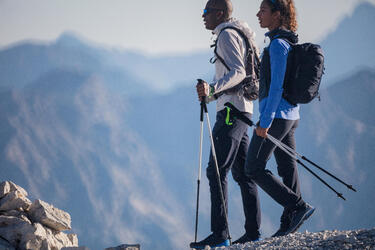
How to Choose Hiking Poles
Hiking poles add stability in rougher terrain and give your upper body more of a workout during hikes. But which model is right for you?
Why Use A Hiking Pole?
Hiking poles are a useful aid to add balance and allow some of your weight to be bared through your upper body during your walks. This will enhance your stability and offer you greater support on tougher terrain. This will mean you'll enjoy a quicker and less strenuous hike at an increased pace, heart rate and oxygen intake. You will also have a more rounded body workout as the poles spread the workload across different muscle groups.
Walking poles also aid your posture by encouraging an upright position as you hike. Before you delve into purchasing a pair, find out what you need to consider first.
Single Or Double
The choice between a single or double hiking pole arrangement is down to your preference. A double arrangement will provide a better balance of weight distributed across your body and add to your stability. While one is better than none, we advise two for the most impact.
Length
Much like adjusting a bicycle seat to allow for a slight bend in your knee, when adjusting your hiking pole length, you want your elbow to have a 90-degree bend when your hiking poles are touching the ground.
Adjustability
All our hiking pole ranges feature adjustable lengths, which means they are easily collapsible for storage and traveling purposes. Despite adjustable poles to suit your height, taller folks will still need to opt for a pole that offers a greater maximum length: For those over 6 feet tall, you’ll want a maximum length of at least 130 cm which is standard on the Forclaz 500 and Forclaz 700. If under 6 feet tall, nearly all adjustable poles will be able to be sufficiently shortened such as the Forclaz Hike 100.
Uphill
When hiking uphill, you’ll want to shorten each pole by about 5-10 cm. This will give you more leverage as you climb. The steeper the hike, the more you can shorten the pole.
Downhill
When hiking downhill, you’ll want to lengthen each pole by about 5-10 cm, which will keep you upright. In both cases, you want to avoid adding any strain on your shoulders -- your shoulders should not feel like they are unnaturally raised or pushed backwards.
Features
Asides from adjustability, look out for features that aid your comfort, ability to transport your poles as well as durability.
Ergonomic Grip
You don’t want a hiking pole that’s going to add strain to your hands. Our Forclaz range is designed with an ergonomic handle that will allow a comfortable grip as you trek, climb or descend.
Lightweight
Lightweight poles create less strain during use, as well as during transport. You don’t want to be lugging around poles that are going to add weight to your backpack or slow you down on-route.
Compact Design
With foldable poles, you gain the ability to adjust the size and also allow easier storage when not in use.
Durability
Depending on the pole material you opt for, you could get more use out of them. Generally, the cost will reflect the trekking poles' longevity. The Forclaz 700 even comes with a 2-year warranty.
Now you’ve got a working knowledge of the various styles and features on offer, take the next step and head out for your next hike like a pro.
How to Stay Hydrated on a Hike?
It's important you stay hydrated during your walks and hikes. Even on shorter routes, make sure you follow our tips to avoid dehydration.
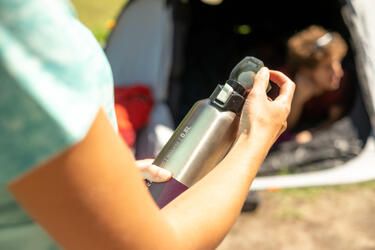
Before You Hike
Plan
As always, plan your hike and take appropriate provisions for the length of the hike, plus extras in case of emergency.
Water
How much water you need will depend on the climate, the intensity of the hike and your personal needs (generally the bigger you are, the more water you will consume). Generally, you will need around half a liter of water per hour during moderate exercise in moderate temperature. But no two people are the same, and while this may satisfy one person’s hydration, another may need twice this amount to feel adequately hydrated. Always take more water than you need, and plan for extra requirements such as water for cooking, or for your dog, for example.
Energy Drinks
Before you hike, an energy drink can be a useful way to load up on carbs and electrolytes.
Caffeinated Drinks
You’ll also want to limit caffeinated drinks, although a thermos full of hot coffee or tea can be a great addition providing you drink adequate water alongside it. Just don’t go too mad, and avoid drinks like red bull and cola, particularly when its replacing water.
Alcohol
On longer and more strenuous hikes alcohol, of course, is the last thing you want to be drinking. Although on more gentle, pathed routes with plenty of country pubs along the route, you may want a few cheeky ales or wines along your trek.
While Hiking
Fluid Intake
While you are hiking you want to take in about half a liter per hour, though as stated, this will change from person to person.
Warm Weather
In warmer weather you will want to take up to a liter per hour or more. Listen to your body. You can also drink too much water, though this is pretty unlikely during exercise, thirst generally underestimates your body's fluid needs, but be sensible.
Electrolytes
Energy drinks or bars can be great to top up your glycogen stores, as well as electrolytes sodium and potassium. You can also include potassium rich foods such as:
Bananas
Citrus Fruits
After A Hike
More Fluids
Following a hike make sure you continue taking in fluids, your body will need to rehydrate following your exertion.
Alcohol
Of course, country pubs are always a lovely ending to your trek, but remember your body may be more dehydrated than usual. Start with a nice pint of water or a glass of fruit juice, and take it easy on the alcohol.
Electrolytes
Here is another great time to top up your sodium and potassium whether it's with an energy drink, bar, a piece of fruit, or a nice meal.
What To Look Out For...Always assess your hydration by keeping an eye out for danger signs:
Dark urine, or painful urination
Excessive fatigue
Dizziness
Rapid heart rate
Weakness
If you notice any of these symptoms, seek medical attention and take a break, take in fluids, eat something and take deep breaths while your body rehydrates. Continuing to hike whilst dehydrated can lead to much more serious complications, so always play safe and be prepared.
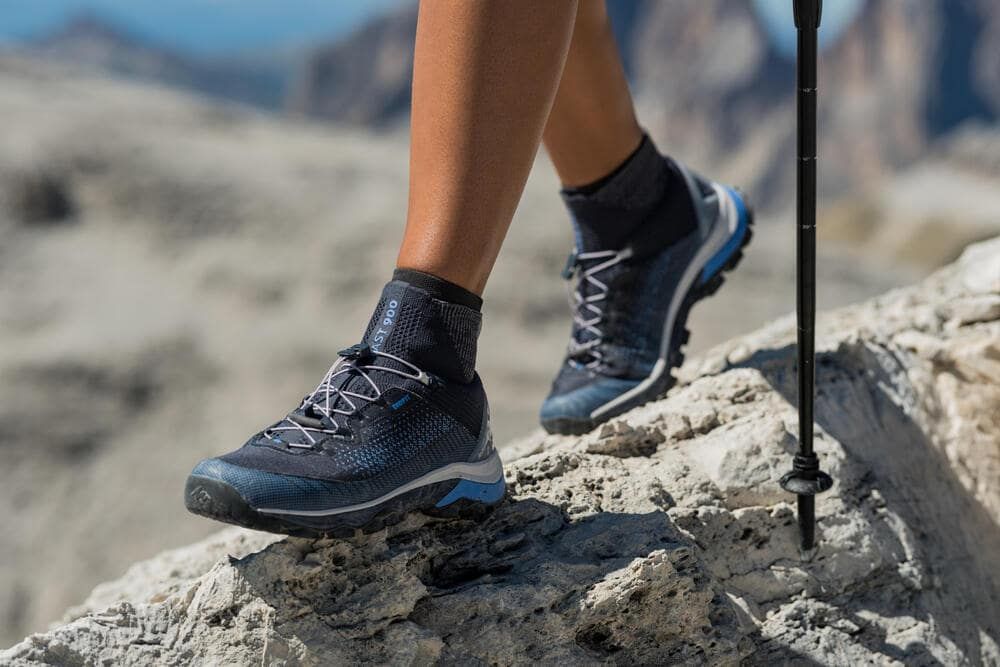
Top 5 Benefits of Walking and Hiking
Walk and hike your way into fitness and find out why it’s one of the best ways to boost your overall well being. In association with Red January. Walking and hiking are one of the best exercises you can do to improve your overall quality of life and are considered an accessible, low-impact and low-intensity way to stay active. Find out why you should get your 5k a day steps below.
Introduce Walking into your Routine
Whether it’s on the treadmill, outdoors on a forest trail or on a busy city sidewalk, introducing regular and consistent walking into your daily routine works wonders. It also meets some prominent health markers when done at a moderate intensity, and can even rival the effectiveness of running if you expend the same amount of energy. Not to mention, there are plenty of physical and psychological benefits to getting your daily steps in.
Physical Benefits of Walking Everyday
Although walking is considered low-intensity, walking meets the criteria of a well-rounded workout. This includes a higher:
Heart rate
Blood flow (lowers blood pressure)
Energy levels
Brain activity
Walking for just 30 minutes a day has been shown to improve mood, reduce your risk of a variety of diseases including heart conditions, diabetes and depression and even improve your quality of sleep.
When does a Walk become a Hike?
If you’re a regular walker, you might wonder when you’ve seamlessly transitioned to a hiking enthusiast! Walks are usually shorter, more convenient and lower intensity compared to hiking. The biggest difference between the two is where you do it. Hiking is usually defined by its unique nature sights and rougher terrain, which means a city stroll wouldn’t qualify as a hike. This can be anything from walking trails through forests, mountains or countryside. Not to mention, walking usually doesn’t require any additional equipment while long may need you to pack a few essentials including specialized footwear, hydration, snacks and navigation gear.
Level Up with Hiking
Hiking takes the physical benefits of walking to the next level. Bringing in the fresh countryside air, rougher terrain and often steep hill climb means that hiking works your leg muscles better than ever before. A backpack filled with your hiking essentials will also add extra resistance and add to the workout.
Psychological Benefits Of Hiking
The psychological benefits of hiking are similar to the benefits you enjoy when walking or exercising in general. The difference is the uptick of mental health benefits, as you’re also surrounded by nature. Alongside boosting brain activity and cognitive function, walking and hiking release endorphins, a feel-good hormone while reducing the stress hormone ‘cortisol’. This, in turn, minimizes feelings of anxiety or depression.
While exercise alone reduces negative feelings, hiking in nature combines exercise with beautiful scenery, fresh air and wildlife activity which can trigger a great meditative and calming state.
While walking itself provides these benefits too, the same unique scenery isn’t quite as accessible when walking through a bustling city and you’ll have to put up with greater noise pollution. The benefits of hiking are unique due to the quieter, scenic and less populated and have a huge impact on mental wellbeing.
Social Benefits Of Hiking
Hiking certainly doesn’t need to be a task you take up alone. Join friends on your nature trails, moorland walks and summit climbs to share conversations, experiences and memories. You may even make new friends along the way; many well-known hiking trails are filled with campsites, B&Bs, pubs and museums or historic sites to visit.
Socially Mediated Benefits Of Hiking
If the physical, psychological and social benefits aren’t enough, you can also benefit with some digital attention for your hiking efforts. Who doesn’t want a profile pic at the cairn on Pen y Van, or standing hillside with the winding Cuckmere River in the background? Just remember to pack your smartphone, a portable charger and a waterproof backpack to pop it in.
The health benefits of hiking are plentiful, whether physical, social or psychological. Most importantly, it can rekindle a passion for nature and teach you to find pleasure in spending time away from your electronics and clear your mind and reset your perspectives during times of stress.
How to Choose Your Hiking Backpack?
A backpack is the ultimate must-have accessory when hiking. Find out which hiking backpack best suits you and your needs. Your backpack is going to carry your shelter, food, navigational tools and extra layers for changing weather conditions. On top of essentials, you can pop in a battery pack for your phone, or a DSLR camera for that all-important selfie or landscape shot when you reach the cairn.
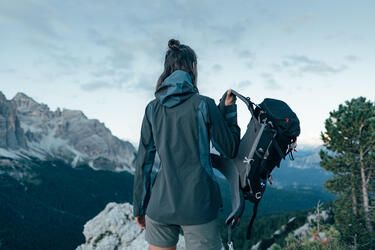
Capacity
While packing a full kit for smaller routes can help you nail your hiking preparation, burn some extra calories, and be safe in the worst of scenarios, it’s not always essential for shorter and well-pathed routes.
Hiking Backpacks For The Day Tripper
When you’re heading to a well-known, short-distance walk that is well signed and well pathed, you aren’t going to need to pack a Bear Grylls-style survival kit. That means a smaller pack is going to provide you with the space to enjoy your hike, knowing you’ve got the bare necessities to keep you comfortable, safe and quicker on your feet. For day hikes, 10-30 liter backpacks will be sufficient.
Hiking Backpacks For The Weekend Warrior
If you're off for a weekend away, you’ll either need a series of stop-offs at quaint B&Bs and countryside pubs, or camping sites to pitch up, sleep and possibly try your hand at some campsite cuisine; particularly, if you are planning on spending a couple of nights in nature, you’re going to need cooking equipment, gas and last, but not least, food.
Whether you plan a more glamorous weekend staying in B&Bs and hotels or head into the wild, albeit under the shelter of a tent, you are going to need to expand your carry pack. Every added route time adds the necessity for more gear. When your trip extends one day, you are going to need to expand to a 30/40 liter backpack. If you're also carrying camping equipment, then a 50/55 liter pack will be more suitable. The bigger capacity will provide space for a tent, cooking equipment, more layers and more food and water.
Hiking Backpacks For The Long Haul
Once you start to head into longer and more challenging hikes, you are going to need to be prepared for the hike itself, as well as unexpected extensions. This means on top of your essentials, you'll need extra gear and camping equipment, especially lots of food and water. If you're tackling more mountainous routes, you may also need to include climbing equipment.
When the hike gets longer, so should your planning. Consider how many days you are going to be hiking, where you can stop to refill water or replenish your provisions and how long you might need to be self-sufficient in case of emergency. You may need up to a 70 or even 80-litre backpack at the higher end of long-haul hikes. This is where more advanced backpack features come in.
Features
Hiking Backpacks With Ventilation
Ventilation is often an overlooked feature when it comes to shopping for backpacks, but you’d be surprised how much heat can get caught between you and your pack. As with your clothing, ideally, you want to dress in breathable material to avoid retaining heat on your back. The Quechua MH500 30L Mountain Hiking Backpack uses a stretch net back design to allow airflow and cooling during your trek. This will improve comfort and avoid overheating during more strenuous hikes.
Compartments
Hiking Backpacks With Added Access
During a hike, you want to be able to have access to anything that can help you reduce any challenges, and be able to enjoy your hike whilst capturing all the special moments, which means accessibility has become one of the most important things when choosing a backpack. This usually comes in the form of easy-to-access compartments that can not only house the essentials like your water bottle but also all your extra accessories that will enhance your experiences like your phone and camera; making accessibility a key component when choosing the best hiking bag.
Hiking Backpacks With Extra Pockets
More compartments allow the separation of electronic equipment and liquids, for example, you wouldn't want to store your phone or power bank in the same compartment as your water bottle or hydration packs, just in case of the unfortunate event that some of those liquids happen to leak.
Waterproofing
Even on a short route, British weather can be temperamental, don’t get caught up in the unpredictable nature of the weather, instead, stay prepared for whatever Mother Nature has in store for you.
Hiking Backpacks With Built-in Waterproofing
Modern hiking backpacks regularly come fully waterproofed, if you are a regular hiker across the British Isles, then you know that rain can be an unwelcome guest even in the summer months. A waterproof backpack can save you the panic of setting up a rain cover when the clouds suddenly open up.
Hiking Backpacks With Raincover
If your backpack doesn’t feature built-in waterproof material, it's probably a good idea to purchase a rain cover to protect your goods from unexpected showers. Our Forclaz brand has some great options that will safeguard your kit against the elements.
Durability
Purchasing a backpack with a warranty is always a good move. Both Quechua and Forclaz products come with a range of warranties ranging from two up to ten years of guaranteed quality.
Fit
Finally, when you are on your feet all day out in the great outdoors, you need comfort. The fit of your backpack is one of the most important features. If your hiking bag doesn’t fit right it’s going to cause discomfort, and over a long period of time, can cause back problems. Make sure you choose a backpack that is suitable for your torso length and fits comfortably around your hips.
Belts & Straps
The various belts and straps on your backpack will allow you to customize the fit to your liking. This will allow you to distribute the pack weight more evenly, preventing injury and resulting in more comfortable hikes.
Hiking Backpacks With A Hipbelt
The hip belt should rest over - you’ve got it - your hip bones. Close the belt and tighten it to move the pack weight onto your hips (away from your shoulders). This will result in more weight distribution and less targeted straining.
Hiking Backpacks With Shoulder Straps
You should tighten your shoulder straps so that the backpack is close up against your back, which will push the load forward rather than dragging it back on your shoulders. Your shoulders should never be carrying the weight.
Hiking Backpacks With Load Lifters
Another mechanism to reduce the load on your shoulders. Load lifters are located just under the top of your shoulders, near your collarbone. Tighten these so the load lifters themselves are angled toward the backpack at a 45 degree angle.
Hiking Backpacks With A Sternum Strap
Sternum straps lie across the chest, between the two shoulder straps. This function pulls the shoulder straps inward when tightened, adjust accordingly so that your arms are able to move freely.
Get Your Backpack And Get Out There!
Now you have a right sized pack, with the correct features for your terrain and weather conditions, adjusted correctly for your frame, it’s time to head out into the wild.
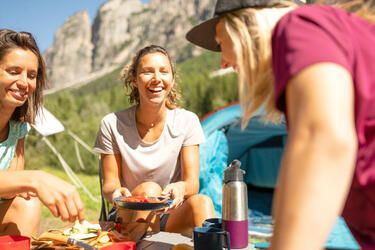
What to Eat Before, During and After Hiking?
Alongside your kit you’re going to need to fuel your hike. Here’s our hiking food tips.
Whether you are off on a one-day, weekend or week-long hiking trip, you’re going to want to bring food for snacks, planned meals and always for emergencies. What you need to bring is case dependent, so your first point of call is planning.
Stay Ahead Of The Game
Your food intake in the days before your hike is going to set the tone of the trip long before you leave your home. A hike shortly after a holiday period where you’ve been knocking back food and booze like its going out of fashion, is going to be more hellish than healing. While this is an extreme example, looking at your caloric intake in the days before a hike will really help you on the trail, particularly if it's a difficult one. Stay away from processed foods, takeaways and overindulging on alcohol. Eat clean, whole food and nutrient dense recipes. In the morning of the hike eat a good source of carbs or pick up an energy bar.
Hydrate
You should be drinking 2-3 liters of water a day, and that’s even if you aren’t exercising regularly. Many of us probably don’t meet this guideline, but in the days before a tough hike, keeping hydrated is a no brainer. More so, it’s going to help you avoid injury and have your engine running optimally. Most of all, don’t forget to stock up on water for the hike itself. Stick it in a thermos flask if you want to keep it cold in hotter months. In the more bitter winter months, you could fill a flask with piping hot green tea to stave away the chills. An extra thermos full of soup is always a nice addition, Try to drink 2-3 liters of water a day as standard, Really try to stick to this the days before your hike, Take more water than you need for your trip, just in case. Use thermos flasks to keep liquids hot or cold, Water purifiers or portable filters are useful here as a back-up.
Day Tripper
If you are off on a one-day ramble, you may want to stop off at a local pub or restaurant along the route. That said, it might be useful to bring along some snacks in case you get peckish. Light-weight, nutrient dense options include:
Nuts or dried fruit.
Fresh fruit.
Cheese.
Crackers (we aren’t going to eat the cheese off the block, we’re not savages).
Biltong
Whole grain breads (or sandwiches).
Energy bars.
Protein bars (perfect for that end of the trail recovery).
Whilst hiking, aim to eat a snack at least once an hour on top of your routine meals.
We won’t tell anyone if you pack a few chocolate bars or a bag of crisps.
Weekender
As the hike length increases, so do your kit requirements. It’s always wise to pack a full kit even on shorter hikes. When you’re out in the wilderness things can always take a turn for the unexpected. Food wise, always take more than you’ll need. Bringing a lightweight gas cooker will allow you to add more to your culinary arsenal:
Plenty of lightweight snacks (see above).
Canned or pouched meat or fish.
Muesli (it’s not so bad with water).
Rice or pasta.
Fresh fruit.
Potatoes.
Certain vegetables (salad items like spinach are likely to turn).
Be Smart With Your Food Choices
Canned or pouched meat and fish is fine, but if you want to cook fresh produce you’ll need a cooler bag.
Ice boxes or backpacks from Quechua can keep items refrigerated for 11-12 hours.
Package food correctly, if keeping raw meat refrigerated alongside drinks or other items, ensure it is in a separately sealed bag or container.
Don’t Leave Yourself Short
Ensure you’ve got your cooker with you if you're planning on playing chef. Don’t forget gas, or you won’t be able to cook much. Bring extra water if you need it in the meal prep. If you’ve brought fresh meat make sure it's sealed and stored at the right temperature. If you’ve brought canned food, don’t forget your tin opener.
Keep It Clean
Use disinfectant wipes or gels to keep your hands clean before you prepare food. Have a little decorum with some camping friendly plates and cutlery. Most of all, clean up after yourself. Take any litter with you until you can dispose of it correctly. Enjoy nature, but leave it as you found it.
Homeward Bound
While advisable to have a quick recovery bite before heading home (this is where a protein bar could come in handy), once you're home it’s time to put your feet up and indulge in some comfort food. If it’s been a particularly challenging hike, maybe it’s time to call in your favorite weekly cheat meal.













